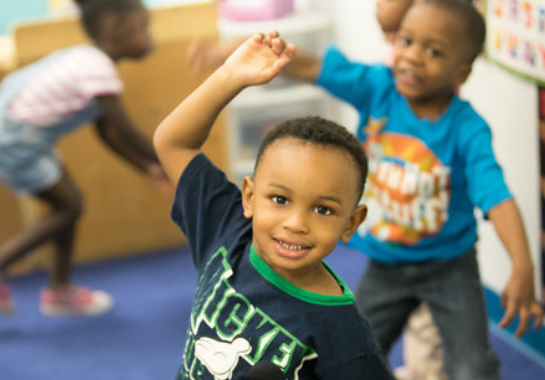
A Quick Look At Child Care Spending In New York
The New York child care industry has been struggling. It has been a nationwide crisis since before the pandemic. However, the pandemic magnified the problem, bringing to light issues that need addressing.
To give you an idea of how COVID-19 impacted child care services in New York state, where over 3,500 service providers shut down their business between January 2020 and July 2022. That statistic is courtesy of the Children’s Agenda.
By The Numbers
Here is a closer look at childcare facts and figures for the 2021 fiscal year released by the Office of Children and Family Services (OCFS). There were 17,161 childcare providers in the state, the majority of them 9,545, based in New York City. Of the total, there were 4,135 daycare and 2,773 school-age center-based services.
There were also 2,821 family and 7,432 group family home-based services. During the 2021 fiscal year, states allocated $832 million for the child care subsidy program.
About 103,000 children in 60,000 families received childcare subsidies during that period. There were about 66,000 children in 39,000 families receiving monthly contributions. The maximum capacity throughout the state is 776,021 children, with 453,321 in New York City.
Center-based child care providers have greater capacity than home-based outnumbering them roughly 6 to 1. Close to 62 percent of children served are in New York City, and about 35 percent of children with child care subsidies are in families receiving Temporary Assistance. A total of 65 percent were not receiving TA (low-income). Finally, roughly 5,500 legally exempt providers enrolled in the child care subsidy program.
Federal Funding Aids The Industry
The federal government has attempted to boost the child care sector by providing much-needed stimulus funding. The CARES Act allocated billions of dollars and stabilization grants money through ARPA (American Rescue Plan Act of 2021). New York’s childcare providers spent over $1 billion, and the state’s Office of Children and Family Services still has more to allocate. Nora Yates, the acting deputy commissioner of OCFS’ Division of Child Care Services, said, “We have another billion to distribute through various initiatives.”
An Analysis Shows Spending Trends of the Money
Raising NY coalition, a group of parents, early childhood educators, business and health organizations, and OCFS worked together to create an analysis showing the spending of federal grant money. The following data is what they discovered.
1 – The OCFS implemented improvements between CARES II and CARES III. The changes resulted in more providers, different types of providers, and more home-based providers gaining access to relief funding.
2 – Data collection on provider gender, race, and ethnicity are vital to monitor and promote fair funding access and distribution.
3 – The type of provider determines the spending of the relief funding. For example, a large number of home-based programs (family child care, group family day care, license-exempt care) spent the money on rent, mortgage, and utilities. On the other hand, center-based programs spent their allotments on staffing costs.
4 – A different amount of relief funding went to data collection that does not track children’s ages in the childcare system, which limits transparency and accountability. This data collection “impacts our ability to support infants, toddlers, and their families effectively.”
Distribution of the Funding Was Swift
According to Yates, “It was important that we got as much money and supported out as quickly as possible.” As for what the analysis has taught the OCFS, Yates says the success of the programs was made possible through feedback from child care providers.
However, the difference was listening to what the providers were saying and addressing their concerns immediately with funding. She explains, “We learned, first and foremost, to always partner with our providers and how this would best work for them. We learned that we need to make the process as simple as possible for them.”
The Report Includes Several Recommendations
There are several recommendations in the report by the Raising NY coalition. They include the following:
1 – Those stakeholders are included in the planning stages of all grants and create an endless feedback loop
2 – To make improvements to the online grant and application portal, such as increasing the capacity
3 – To increase the amount of data collected and to increase transparency
4 – To establish a distribution process that is equity-driven
5 – To make sure that eligibility for other individual sources such as social services and additional benefits are not impacted by receiving relief funding
6 – To provide any short-term financial relief during the child care system transformation process
Child Care Deserts Under Examination
A childcare desert is an area that does not have enough childcare services. That can be from a lack of providers in a specific community or a lack of available space for the number of children requiring care. Half of the United States population currently lives in a childcare desert.
Yates says the OCFS will examine childcare deserts and complete analysis of the situation. She says, “The governor is investing $100 million to work on those hard-hit parts of the state. The group recently distributed $70 million of that amount and is sorting through applications for the remaining amount.
Final Thoughts
The childcare industry has been in trouble for years. However, the pandemic brought some issues to light that require additional funding from the state and federal governments if child care remains a viable industry. In New York, funding has come with wise spending. With advocacy groups involved, many recommendations have improved the process when more subsidies are received and require distribution. The idea is to reach as many children as possible who need child care with the funds available.
—
Sandra Chiu works as Director at LadyBug & Friends Daycare and Preschool.